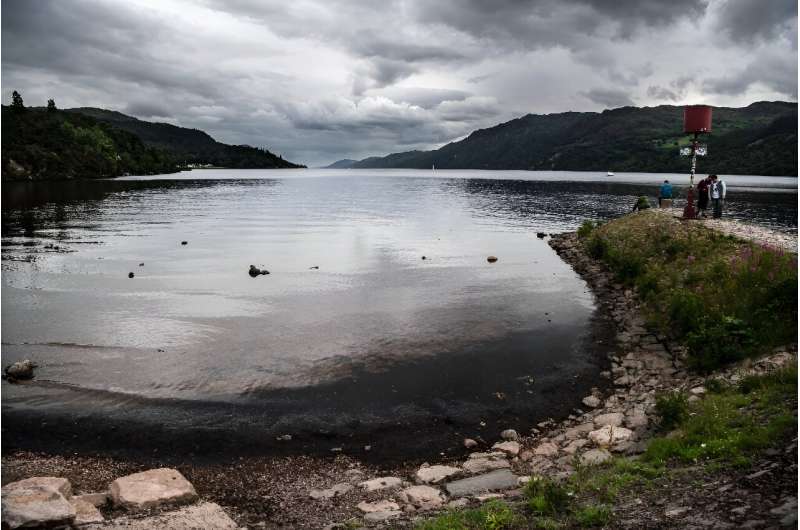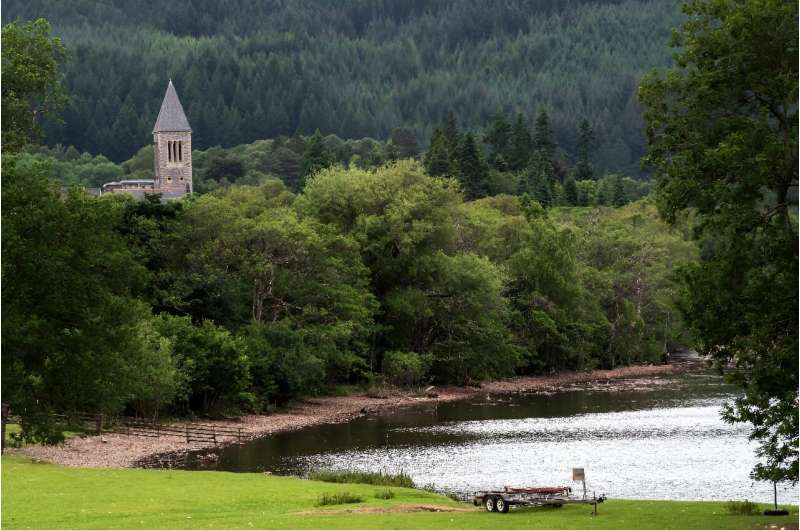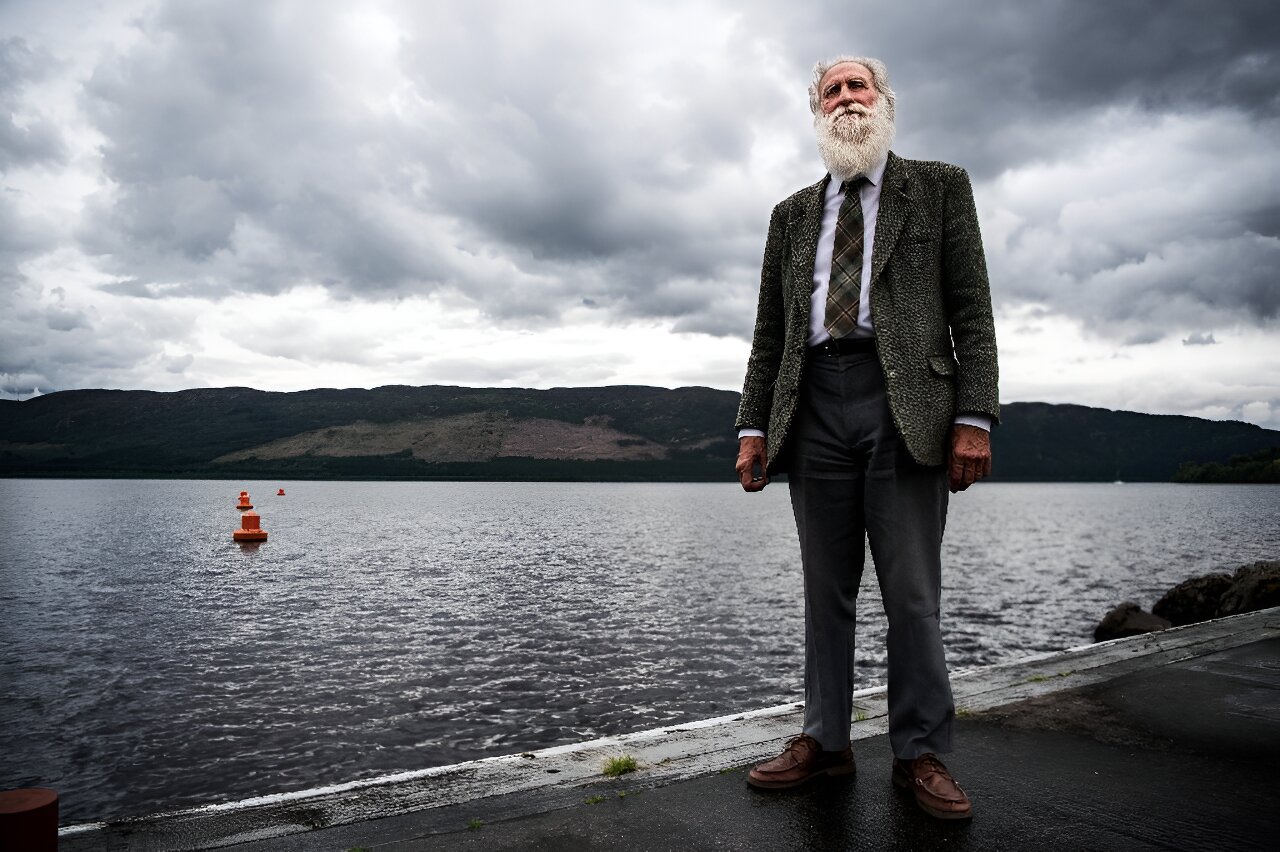Around Scotland’s Loch Ness, renowned for harboring a mythical monster in its murky depths, another consecutive dry spell at the beginning of this year has raised concerns of a different nature.
The unusually dry start to 2023, combined with gradual climate shifts, is impacting various aspects including indigenous wildlife, species like Scotland’s famous salmon, farming, and power production.
“Water is increasingly becoming a scarce commodity in this region,” remarked salmon fisherman Brian Shaw to AFP during a visit last month, as Scotland grappled with its hottest June ever recorded.
“Everyone is vying for the use of water for their own needs.”
Data released by the Scottish Environment Protection Agency (Sepa) in May confirmed what astute observers had already noticed: the fresh waters of Loch Ness—Scotland’s largest by volume—had reached their lowest level in decades.
The depth, measured at around 109 cms (3.5 ft) at a hydroelectric dam along the eastern shore, had not been this shallow since the early 1990s.
“The water level has been constant for several months now,” observed Gordon Mangus, 84, who grew up near the legendary lake and now serves as its harbor master.
“We are accustomed to rainfall, but we are not accustomed to such prolonged dry spells.”
A similar situation is being observed in other areas of the Highlands, including Loch Maree to the northeast and Black Isle to the west.

Persistent Dry Weather
“Scotland is often seen as a wet country, but droughts are becoming increasingly frequent due to climate change,” explained Nathan Critchlow, the head of water and planning at Sepa.
“Droughts used to be rare, occurring roughly once every 18 years. However, by 2050, we predict low water levels will be experienced roughly every other year.
“The climate in Scotland is changing, and we are beginning to witness the consequences of this change.”
Standing by the banks of the River Ness, which flows from Loch Ness to the sea at Inverness, the northernmost city in the UK, Shaw pointed to the visible stone bed of the river as evidence of its diminishing levels.
The director of the Ness District Salmon Fishery Board noted that the river’s depth has been gradually decreasing for years, but the trend has become more pronounced.
“Following a dry winter, an extremely dry spring, and an exceptionally hot June, the river has been shrinking,” he informed AFP.
Shaw also highlighted the negative impact of the warmer, drier weather on the wild salmon population.

Shaw added that one of the small streams that feed into the river had already dried up, leading to the death of fish.
“Such events are becoming increasingly commonplace, and there is genuine concern about the future of salmon and the ever more challenging environment we face,” he cautioned.
Although recent rainfall has provided some relief in certain parts of Scotland, water levels in some areas remain significantly depleted, reaching an alert level according to Sepa.
The UK’s Meteorological Office is predicting another dry period later in the summer.
Increasing Demand for Water
Demand for water during the summer months is also rising, with increased competition among farmers, fishermen, domestic users, including tourists, and hydroelectric firms, as noted by local residents.
SSE Renewables, the operator of a hydroelectric scheme at Loch Ness, has faced allegations from fishermen and others that it is responsible for the decrease in the loch’s water levels due to water storage for electricity generation.
The operator has denied these claims, attributing the depletion to the prolonged dry weather.

Environmental experts are advising residents and businesses to adapt to the changing weather patterns and prepare for periods of water scarcity and flooding as average temperatures rise.
According to the Climate Change Committee (CCC), Scotland’s 10 warmest years on record have
Denial of responsibility! SamacharCentrl is an automatic aggregator of Global media. In each content, the hyperlink to the primary source is specified. All trademarks belong to their rightful owners, and all materials to their authors. For any complaint, please reach us at – [email protected]. We will take necessary action within 24 hours.

Shambhu Kumar is a science communicator, making complex scientific topics accessible to all. His articles explore breakthroughs in various scientific disciplines, from space exploration to cutting-edge research.
Denial of responsibility! Samachar Central is an automatic aggregator of Global media. In each content, the hyperlink to the primary source is specified. All trademarks belong to their rightful owners, and all materials to their authors. For any complaint, please reach us at – [email protected]. We will take necessary action within 24 hours.


